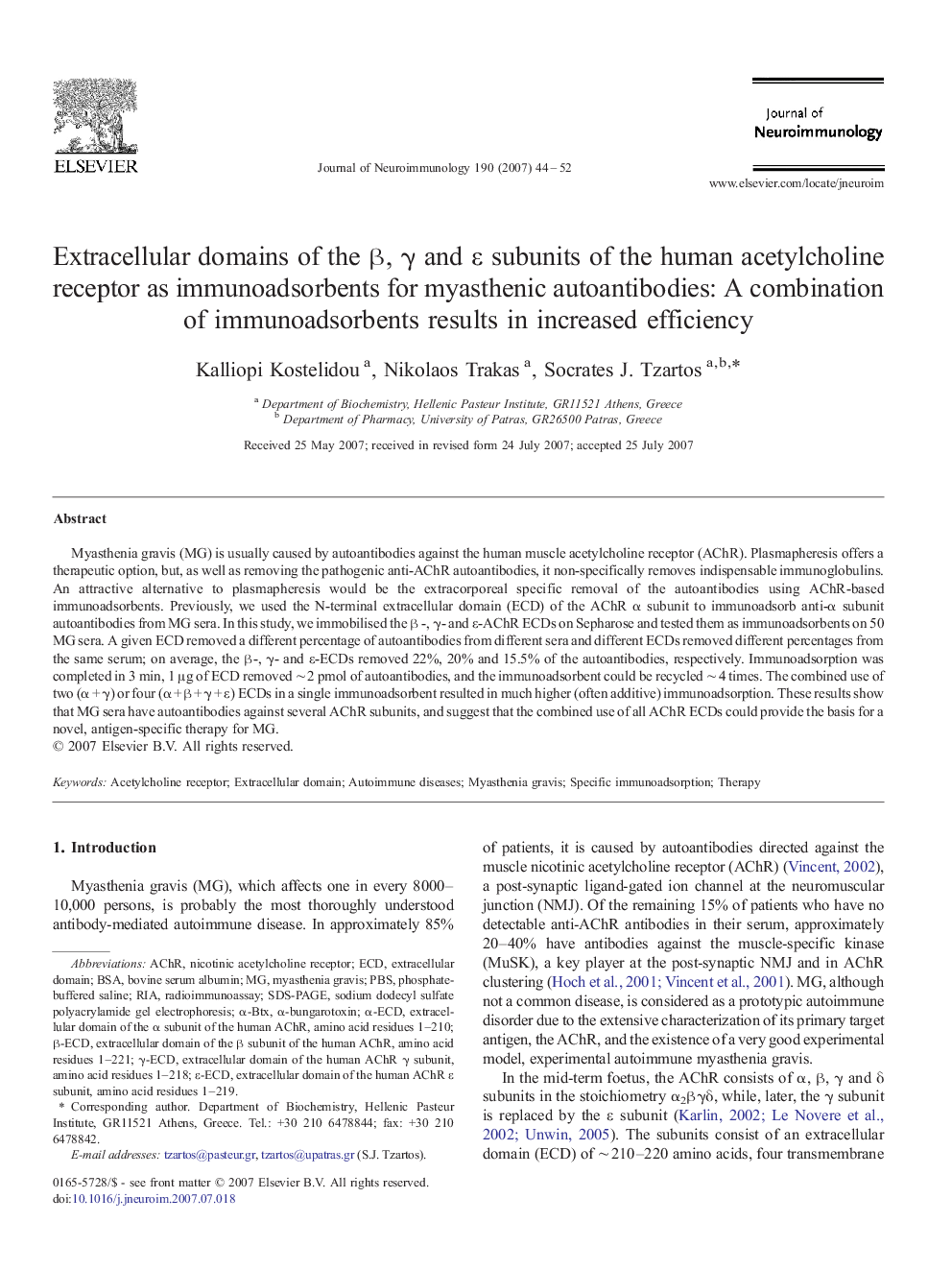| Article ID | Journal | Published Year | Pages | File Type |
|---|---|---|---|---|
| 3065775 | Journal of Neuroimmunology | 2007 | 9 Pages |
Myasthenia gravis (MG) is usually caused by autoantibodies against the human muscle acetylcholine receptor (AChR). Plasmapheresis offers a therapeutic option, but, as well as removing the pathogenic anti-AChR autoantibodies, it non-specifically removes indispensable immunoglobulins. An attractive alternative to plasmapheresis would be the extracorporeal specific removal of the autoantibodies using AChR-based immunoadsorbents. Previously, we used the N-terminal extracellular domain (ECD) of the AChR α subunit to immunoadsorb anti-α subunit autoantibodies from MG sera. In this study, we immobilised the β -, γ- and ε-AChR ECDs on Sepharose and tested them as immunoadsorbents on 50 MG sera. A given ECD removed a different percentage of autoantibodies from different sera and different ECDs removed different percentages from the same serum; on average, the β-, γ- and ε-ECDs removed 22%, 20% and 15.5% of the autoantibodies, respectively. Immunoadsorption was completed in 3 min, 1 μg of ECD removed ∼ 2 pmol of autoantibodies, and the immunoadsorbent could be recycled ∼ 4 times. The combined use of two (α + γ) or four (α + β + γ + ε) ECDs in a single immunoadsorbent resulted in much higher (often additive) immunoadsorption. These results show that MG sera have autoantibodies against several AChR subunits, and suggest that the combined use of all AChR ECDs could provide the basis for a novel, antigen-specific therapy for MG.
